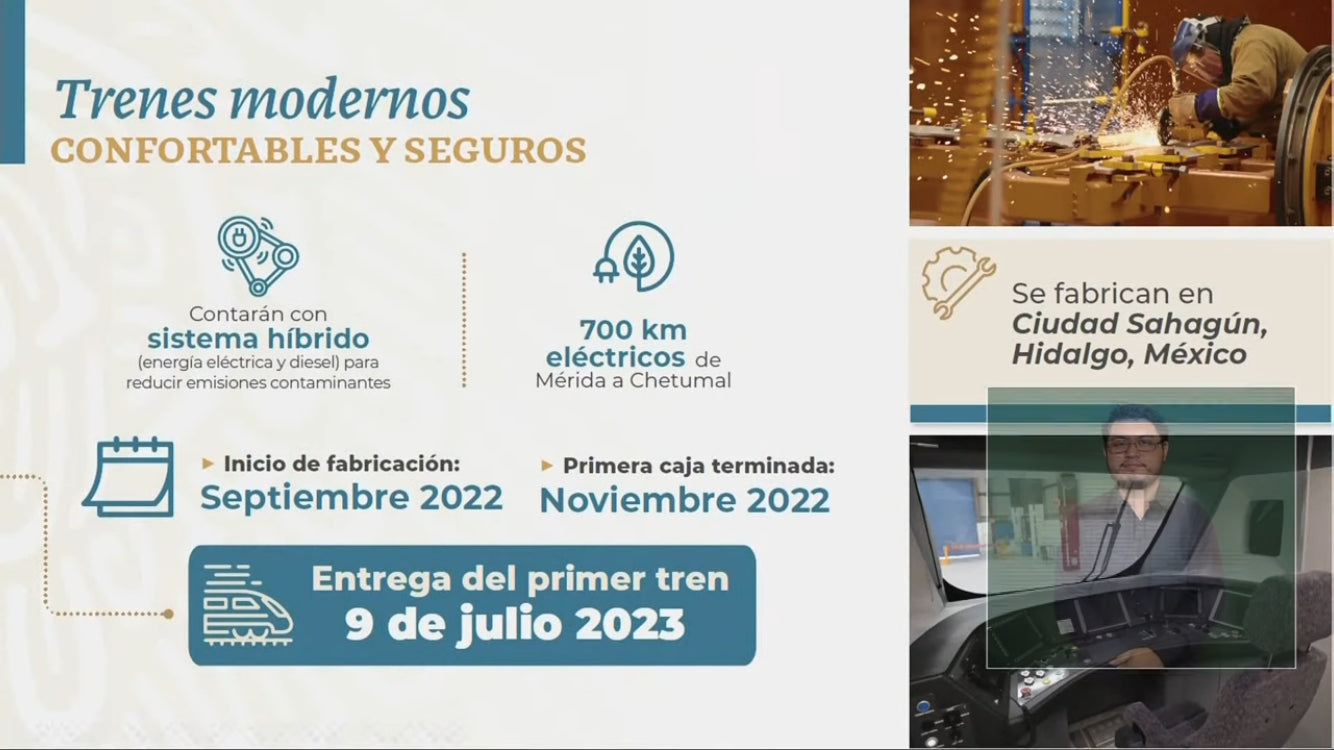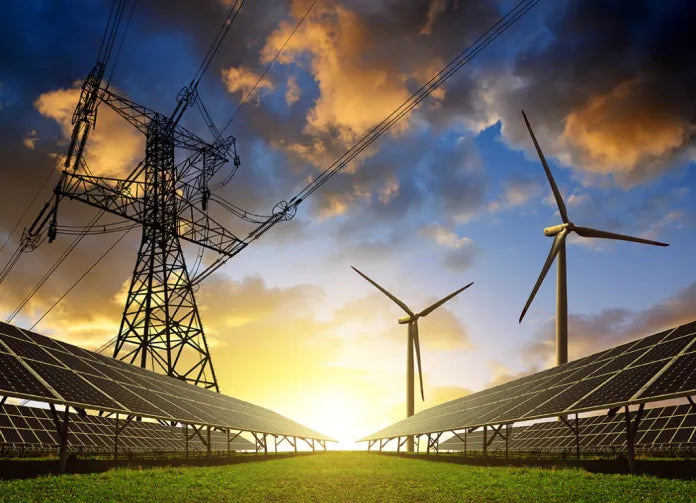https://www.pv-magazine.com/2022/11/12/weekend-read-solar-tops-the-bill/
Weekend read: Solar tops the bill

The boost to US-based solar manufacturers delivered palpable energy to the RE+ event, which started on Sept. 19 in Anaheim, California.
Photo: Corpora Studios
From pv magazine 11/2022.
The Inflation Reduction Act (IRA), signed into law by US President Joe Biden in August, is the largest climate and energy spending package in US history. The massive bill includes $600 billion in spending, $370 billion of which is dedicated to renewables and climate resilience.
“This act includes $369 billion to take the most aggressive action ever … ever, ever, ever, in confronting the climate crisis,” said Biden during the bill’s signing.
The IRA mandates a nationwide reduction of carbon emissions by roughly 40% in 2030 and aims for energy savings for Americans. Biden’s administration said 7.5 million more families will be able install solar on their roofs with a 30% tax credit, saving them approximately $9,000 over the life of the system or at least $300 per year. Families that take advantage of clean energy, efficiency, and electric vehicle tax credits will save more than $1,000 a year, the administration claimed.
IRA spending will be supported by closing tax loopholes for the wealthiest Americans and corporations. The administration said 55 of the largest US corporations paid no taxes in 2020 and the top 1% of earners are estimated to legally avoid $160 million in taxes annually. Closing those get-outs and levying a minimum 15% tax on the most profitable corporations will capture $124 billion in previously lost government revenue over a decade, according to the bill’s authors.
Summary of IRA manufacturing incentives
| 100% | 75% | 50% | 0% | ||
|---|---|---|---|---|---|
| 2022-2029 | 2030 | 2031 | 2032 | 2033 | |
| Solar | |||||
| PV modules | 7 ¢/Wdc | 5.3 ¢/Wdc | 3.5 ¢/Wdc | 1.8 ¢/Wdc | 0 ¢/Wdc |
| Thin-film PV cells | 5 ¢/Wdc | 3.8 ¢/Wdc | 2.5 ¢/Wdc | 1.3 ¢/Wdc | 0 ¢/Wdc |
| Crystalline silicon PV cells | 4 ¢/Wdc | 3 ¢/Wdc | 2 ¢/Wdc | 1 ¢/Wdc | 0 ¢/Wdc |
| Crystalline silicon PV wafers | $12/m2 | $9/m2 | $6/m2 | $3/m2 | $0/m2 |
| Solar grade polysilicon | $3/kg | $2.25/kg | $1.50/kg | $0.75/kg | $0/kg |
| Polymer backsheets | $0.40/m2 | $0.30/m2 | $0.20/m2 | $0.10/m2 | $0/m2 |
| Inverters* | |||||
| Central inverter | 0.25 ¢/Wac | 0.19 ¢/Wac | 0.13 ¢/Wac | 0.06 ¢/Wac | 0 ¢/Wac |
| Utility inverter | 1.5 ¢/Wac | 1.13 ¢/Wac | 0.75 ¢/Wac | 0.38 ¢/Wac | 0 ¢/Wac |
| Commercial inverter | 2 ¢/Wac | 1.5 ¢/Wac | 1 ¢/Wac | 0.5 ¢/Wac | 0 ¢/Wac |
| Residential inverter | 6.5 ¢/Wac | 4.88 ¢/Wac | 3.25 ¢/Wac | 1.63 ¢/Wac | 0 ¢/Wac |
| Microinverter | 11 ¢/Wac | 8.25 ¢/Wac | 5.5 ¢/Wac | 2.75 ¢/Wac | 0 ¢/Wac |
| Trackers | |||||
| Torque tube or longitudinal purlin | $0.87/kg | $0.65/kg | $0.44/kg | $0.22/kg | $0/kg |
| Structural fasteners | $2.28/kg | $1.71/kg | $1.41/kg | $0.57/kg | $0/kg |
| Batteries | |||||
| Electrode active materials** | 10% | 7.5% | 5% | 2.5% | 0% |
| Cells ($/kWh) | 35 | 26.30 | 17.50 | 8.80 | 0 |
| Modules ($/kWh) | 10 | 7.50 | 5 | 2.50 | 0 |
| Modules that don't use cells ($/kWh) | 45 | 33.80 | 22.50 | 11.30 | 0 |
| Modules ($/kWh) | 10% | 7.5% | 5% | 2.5% | 0% |
Solar is set to play a central role in decarbonizing and onshoring US energy. By 2030, it is estimated the IRA will drive the installation of 950 million solar panels, 120,000 wind turbines, and 2,300 grid-scale battery plants.
“Americans can rest assured that our leaders have acted to lower costs, strengthen American energy independence, and create hundreds of thousands of well-paid jobs, all while combating the damaging impacts of climate change,” said George Hershman, CEO of utility-scale solar developer SOLV Energy. “With the president’s signature, the solar industry stands ready to invest in our domestic manufacturing capacity, grow the workforce, and rapidly scale our clean energy deployment efforts.”
Tax credits
One of the most significant provisions of the infrastructure law is the long-term extension of the investment tax credit (ITC) which was instrumental in launching the US solar industry. The bill calls for a 10-year extension of 30% of the cost of installed equipment to be tax exempt, falling to 26% in 2033, and 22% in 2034. That 30% credit also applies to energy storage, meaning retrofits of batteries to solar arrays can benefit.
Interconnection costs will be included for projects smaller than 5 MWac. That is particularly beneficial to a US solar market saddled with project soft costs which are among the highest in the world. Residential soft costs can exceed 65%, according to the Department of Energy.
Projects with at least 1 MW of generation capacity must pay attention to employment requirements to receive the full ITC, however. With a default ITC rate of 6%, laborers and mechanics installing the projects must be paid prevailing wages and be part of an electrical apprenticeship program for developers to enjoy another 24%. Those rules will apply from 2023 and violations will bring down Secretary of Labor fines of $5,000 per underpaid laborer or mechanic unless the underpayment is found to be intentional, in which case, the fine doubles.
The IRA includes significant “adders” to raise the ITC beyond 30%. Projects featuring a minimum amount of domestically produced content are eligible for another 10%. To reach that target, all steel and iron must be US made and at least 40% of manufactured goods – solar panels, inverters, electrical gear – must qualify too, with the latter percentage to rise in future. Historically, Made-in-the-USA goods must feature at least 55% domestic content but the bill lists exceptions, permitting imports of materials not made to satisfactory quality or in sufficient numbers in the US. Domestic components which would raise project costs by more than a quarter can also be shipped in.
Popular content
A further 10% of ITC is available to projects in designated “energy communities” – brownfield sites and former fossil fuel production areas. In the latter case, county subdivisions – or “census tracts” – and their immediate neighbors, are eligible as long as there has been coal, oil, or natural gas extraction since 2000.
Biden’s bill also extended the generation-based production tax credit (PTC), previously afforded to wind farms, to include solar for the first time. That clean-energy PTC will be available until the end of 2024 when it will become technology-neutral. Solar, wind, geothermal, biomass, hydropower, and other eligible projects will bank a tax credit of $0.003 per kilowatt-hour generated, with $0.015 paid to projects built by workers in receipt of a prevailing wage and that met apprenticeship requirements.
PV booster jab
The Inflation Reduction Act aims to lift domestic manufacturing in the US through tax credits, grants, loans, government procurement, R&D support, and more, writes Anne Fischer. The global solar supply chain has been dealt repeated blows, from import tariffs and the Uyghur act to pandemic-related manufacturing and shipment delays. Nevertheless, solar still made up 39% of new US electricity generation capacity from January to June. The Solar Energy Industries Association (SEIA) predicted a ripple effect of the IRA’s $60 billion for US manufacturing by estimating, in its “Manufacturing Roadmap 2022,” the bill would drive investment in modules, trackers, inverters and racking within three years, and ingot, wafer and cell capacity within five. In the short-term though, other supplies will have to be sourced and SEIA deputy general counsel Amir Yazdi told the RE+ trade show in September, the US must continue to work with allies in a competitive market.
A higher PTC, of $0.026/kWh, is available for projects built before an “act beginning construction deadline” which will occur 60 days after the Internal Revenue Service specifies its wage and apprenticeship requirements.
“With long-term incentives for clean energy deployment and manufacturing, the solar and storage industry is ready to create hundreds of thousands of new jobs and get to work building out the next era of American energy leadership,” said SEIA president Abigail Ross Hopper. “This is a crucial window of opportunity that we cannot miss, and now Congress must seal the deal and pass this legislation.”
Solar decade
As a result of the IRA, researchers from Princeton University, Dartmouth College, Evolved Energy Research, and Climate Impact Consulting noted – in the REPEAT (Rapid Energy Policy Evaluation and Analysis Toolkit) study – solar deployment may accelerate from the 10 GW added in 2020 to 49 GW in 2024 and more than 100 GW by 2030.
Solar investment could reach $321 billion in 2030, up from an anticipated pre-IRA $177 billion. The REPEAT report expects the IRA to drive almost $3.5 trillion in capital investment into new American energy supply over a decade. With annual US energy expenditure expected to fall at least 4% in 2030, the IRA would bring almost $50 billion of savings for households and businesses.
The REPEAT study estimates the IRA and the Bipartisan Infrastructure Law could cut an extra billion metric tons of US carbon emissions in 2030, on their own representing two-thirds of the reductions needed to meet the goal of halving 2005 emission levels in 2030.
“It really makes me incredibly optimistic,” said Princeton’s Jesse Jenkins, leader of the REPEAT project. “It doesn’t get us all the way there on its own, but it keeps us in the climate fight.”
This content is protected by copyright and may not be reused. If you want to cooperate with us and would like to reuse some of our content, please contact: editors@pv-magazine.com.




